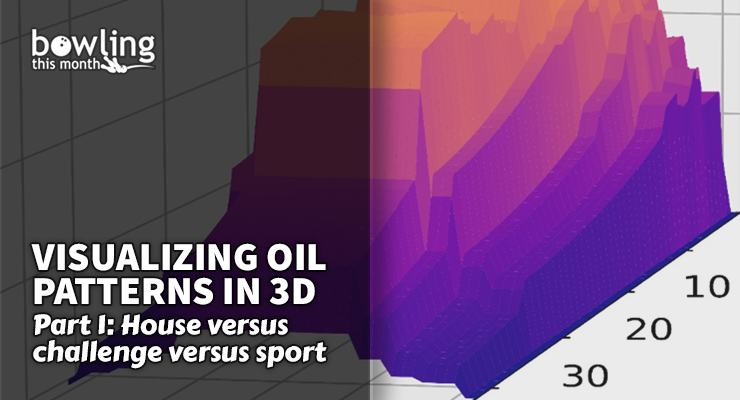Article Contents
- 1. Background
- 2. House pattern versus challenge pattern versus sport pattern
- 2.1. House pattern: Kegel Stone Street
- 2.2. Challenge pattern: Kegel Beaten Path
- 2.3. Sport pattern: Kegel Autobahn
- 3. Conclusion
- 4. Next time…
- 5. References
Note: This article is only available to Bowling This Month subscribers.
The oil pattern undoubtedly is one of the most important aspects in bowling. Along with features such as lane topography and lane friction, it contributes to the makeup of the playing surface. Due to the transparent nature of the lane conditioner and its thinness on the lane, it is impossible to see the structure of an oil pattern on a bowling lane, although the dyed oil used on some TV shows did help.
Kegel’s KOSI software offers a three-dimensional representation of oil patterns as discussed in the BTM article Patterns in 3D by Joe Slowinski. More recently, a 3D animation is available on Kegel’s pattern library app, which offers an enhanced continuous representation of oil patterns in 3D. While they both do a good job at giving the users some appreciation for the pattern structure, the level of mathematical modeling behind them could be improved further, which would lead to more accurate results.
Over recent years, I have been able to use my skills as an applied mathematician to further develop this area. Recently, I completed a project that started during the time when I couldn’t get to the bowling alley during the COVID-19 pandemic, whereby I mathematically modeled how Kegel lane machines apply lane conditioner to a lane. One of the outputs of the model is a very accurate representation of oil patterns in 3D.
In this series of three articles, we’ll use the mathematical model to view a range of oil patterns in 3D. We will explore how changing key parameters in the programming of oil patterns changes their shape, and the difference in ball motion that such changes may cause. In this first article, we will focus on the operation of the lane machines, touch briefly on the construction of the mathematical model, and illustrate some sample oil patterns to get a flavor of what the model can do. The second article will investigate the effect of the speed of the lane machine ...
Already a premium member? Click here to log in.


